Duck is a bird with waterproof feathers and webbed feet. Ducks resemble geese and swans. But ducks have shorter necks and wings and flatter bills, and they quack or whistle rather than honk. Male ducks are called drakes, and females are called ducks.
Ducks live throughout the world in wetlands, including marshes and areas near rivers, ponds, lakes, and oceans. They inhabit arctic, temperate, and tropical regions for some or all of the year. Many kinds of ducks migrate long distances annually between their breeding grounds, where they rest and raise their young, and their wintering areas, where the water does not freeze. Some ducks migrate thousands of miles.
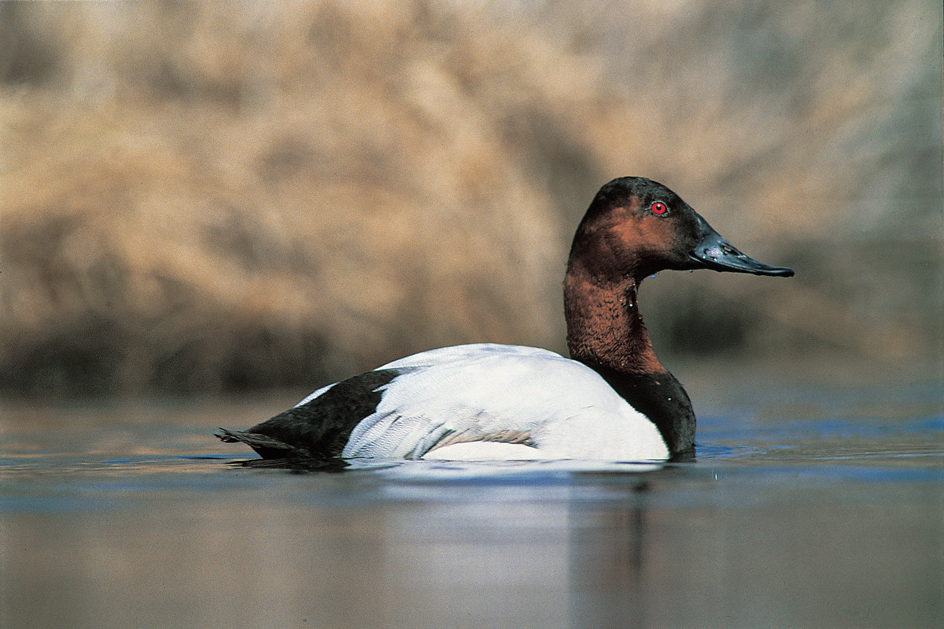
Most ducks are good to eat. Farmers raise the ducks that people buy to eat at home and in restaurants. Duck farming is a profitable business on Long Island, New York, and in the state of Washington, as well as in many parts of Europe, Australia, and New Zealand. Hunters also kill many kinds of wild ducks for food. But the sale of wild game is against the law in a number of countries, including the United States and Canada.
The features of a duck
Ducks spend a lot of time in water, where their webbed feet serve as paddles for swimming and diving. They are graceful on water, but waddle clumsily when walking on land because their legs are set on the sides and toward the rear of the body. Most common wild ducks weigh from 2 to 4 pounds (0.9 to 1.8 kilograms), but some of the smaller species (kinds) weigh less than 1 pound (0.45 kilogram).
The various kinds of ducks get their food in different ways, depending on their body features. Some ducks extend their long necks down through shallow water to pick food off the bottom. Others dive for food in deep water. Ducks that sift food have wide bills with edges. These edged bills strain seeds and such tiny animals as insects from the water. Some ducks have short, wedge-shaped bills that they use to pry barnacles from rocks or to open or crush clams. Others have long, narrow bills with sawlike edges for catching and holding fish.
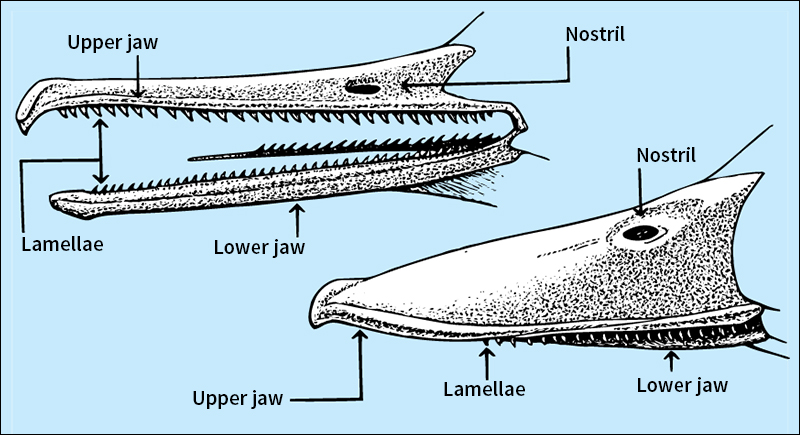
Ducks waterproof their feathers. They use their bills to rub the feathers with a waxy oil from a gland at the upper base of the tail. Under the oiled feathers is a layer of soft, fluffy feathers called down. Down helps insulate a duck’s body by trapping air under the outside feathers.
Most drakes have bright-colored feathers. Their colors include green, blue, red, and chestnut. But drakes of some species are mostly black and white. Most females are brown and can hide by blending with the surroundings when incubating eggs or taking care of ducklings.
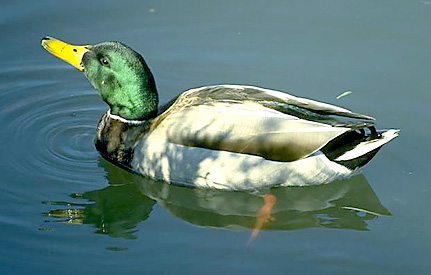
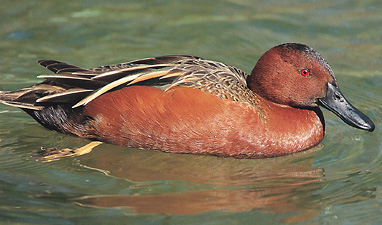
The life of a duck
Ducks seek mates during winter or during spring migration. The bright colors of the drakes attract females. A female usually leads her drake to the breeding grounds during the spring migration, often returning to the same wetland where she was hatched. The ability of ducks and other birds to return to the same places each year is called homing behavior. Once on the breeding grounds, males of several duck species defend a small territory from which they drive away other males or other pairs of their own species. Females build nests in clumps of grass or reeds, under bushes, or in tree holes.
Ducklings.
The female duck lays from 5 to 12 eggs. After she starts to sit on the eggs to warm and protect them, the drake leaves to join other males. The ducklings hatch from three weeks to a month later.

Mallard
Loading the player...
Common shelduck
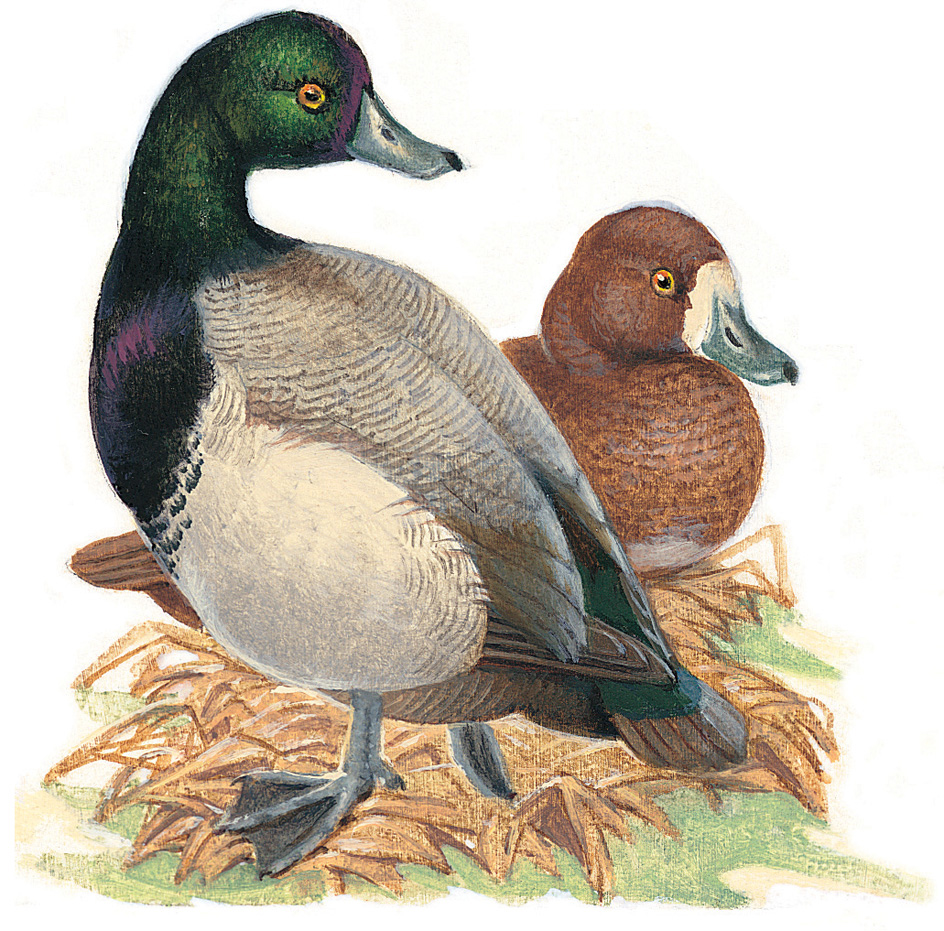
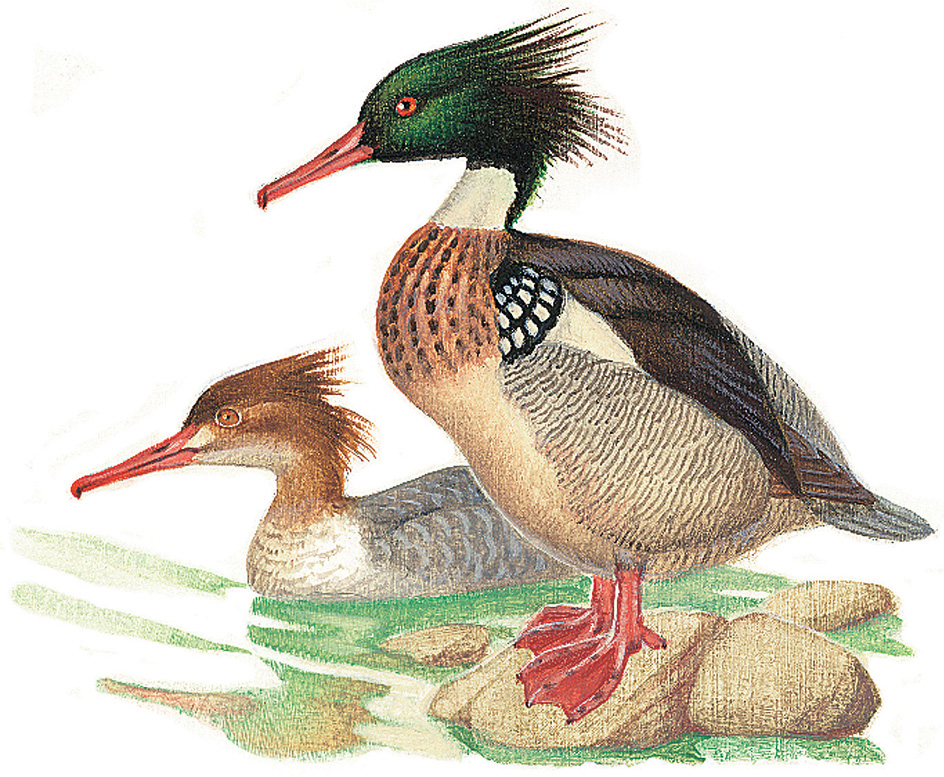
North American redhead ducks may lay eggs in the nests of other species, relying on the other ducks to hatch the eggs and care for the young. Most ducklings look alike, and the new mother usually accepts them.
Ducklings can run, swim, and find food for themselves within 36 hours of hatching. A group of ducklings is called a brood. A mother duck keeps her brood together so she can protect it from predators. Animals that prey on ducklings include turtles, minks, raccoons, hawks, and large fish. Mother ducks keep their broods warm by covering them, especially at night. Sometimes the ducklings from one brood mix with another. As a result, some females end up with broods of 15 to 25 ducklings, while others have only 2 or 3. Ducklings grow quickly and have most of their feathers in about a month. They are able to fly in five to eight weeks.
Food.
Ducks that feed at the water surface are called dabbling ducks. They eat mostly wetland plants, including the seeds of aquatic weeds, grasses, sedges, and rushes. They also eat insects and other small animals that they find on or under the water. Pochard ducks dive to the bottom for roots, seeds, snails, insects, and small clams. In fresh water, pochards and dabbling ducks may eat many kinds of insects, including beetles, bugs, and dragonflies. In salt water, they feed on snails, barnacles, shrimp, and mussels, as well as on plants. Wood ducks eat acorns, small fruits, insects, and seeds.
Mergansers are ducks that eat mostly fish, which they catch in either salt water or fresh water. Eiders and other sea ducks pull crabs, barnacles, and mussels off rocks and weeds. They dig snails, cockles, and clams from the bottom, and they also catch fish.
Habits.
Once the female duck has nested, the drake usually leaves her and joins other drakes to molt (lose their old feathers). The drakes lose their bright colors and for several weeks have a brown color like that of the females. During this molt only, the drake also loses his flight feathers and cannot fly. He molts again in early fall and regains his bright mating colors. After her ducklings are well grown, the female also molts and replaces all her feathers.
After the adults grow new feathers and the young learn to fly, the ducks gather in flocks on large lakes, marshes, or coastal areas to migrate to their wintering grounds. Large staging flocks may feed in grain fields for several weeks to build up energy reserves for the long migratory flight. Ducks frequently fly in long lines or “V” formations. Flocks use the same summer and winter areas year after year, even stopping to rest at the same spots along the way. Some ducks fly only a short distance. Others make long flights—some even travel from Canada to Central and South America.
Kinds of ducks
Scientists traditionally classify ducks into eight tribes (groups), all of which are described in this section. Members of five of the eight tribes are found in North America. This section describes these five tribes. The scientific name of the tribe appears in parentheses after the common name.
Dabbling ducks
(Anatini) include mallards, black ducks, pintails, baldpates, gadwalls, teals, and shovelers. These birds tip bottom-up in shallow water, stretching their necks to feed on the bottom. They take off from water in quick jumps. Each kind of dabbling duck has a specific colored pattern on its wings called the speculum, which can identify the species.
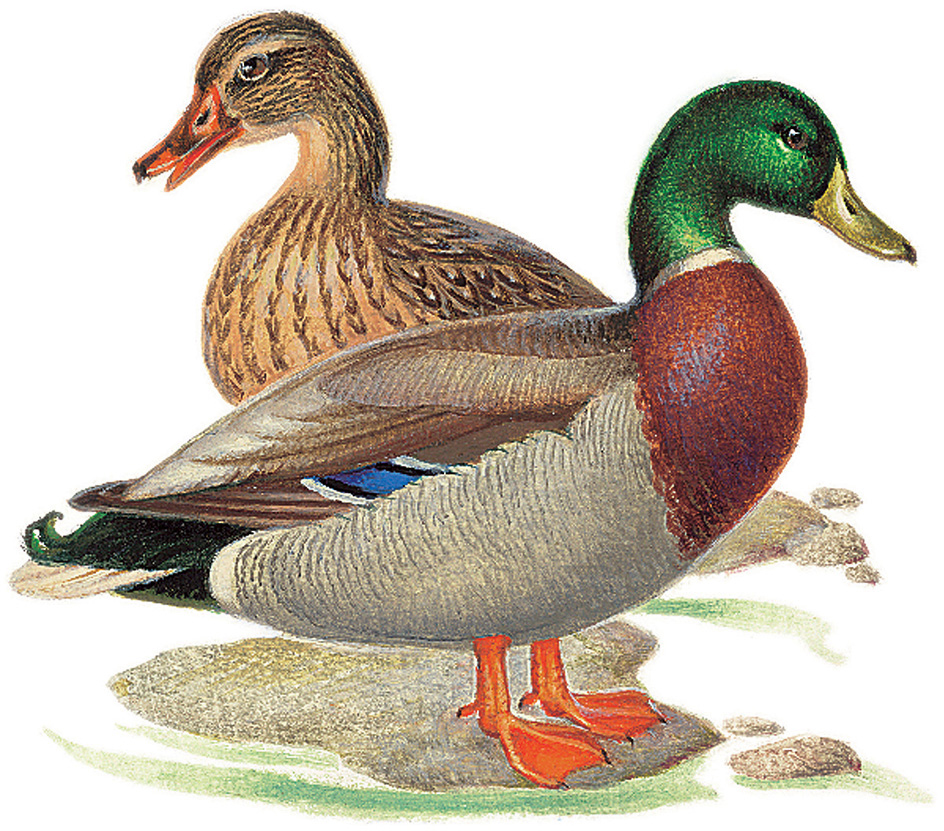
Nearly all domestic ducks are dabbling ducks that were bred from wild mallards. White Pekin ducks, which weigh about 8 pounds (3.6 kilograms), rank as important commercially raised ducks.
Pochards
(Aythyini) include canvasbacks, redheads, ringnecks, and greater and lesser scaups. They swim underwater with wings closed and legs sticking out to the sides. They have short wings and their legs are closer to the rear of the body than those of most other ducks. Pochards typically dive to feed below the water surface. They run along the surface of the water to get airborne.
Perching ducks
(Cairinini) include wood ducks, mandarin ducks, and Muscovy ducks. They are extremely colorful ducks of eastern North America and the tropical regions of Africa, Asia, and Central and South America. They often perch in trees.
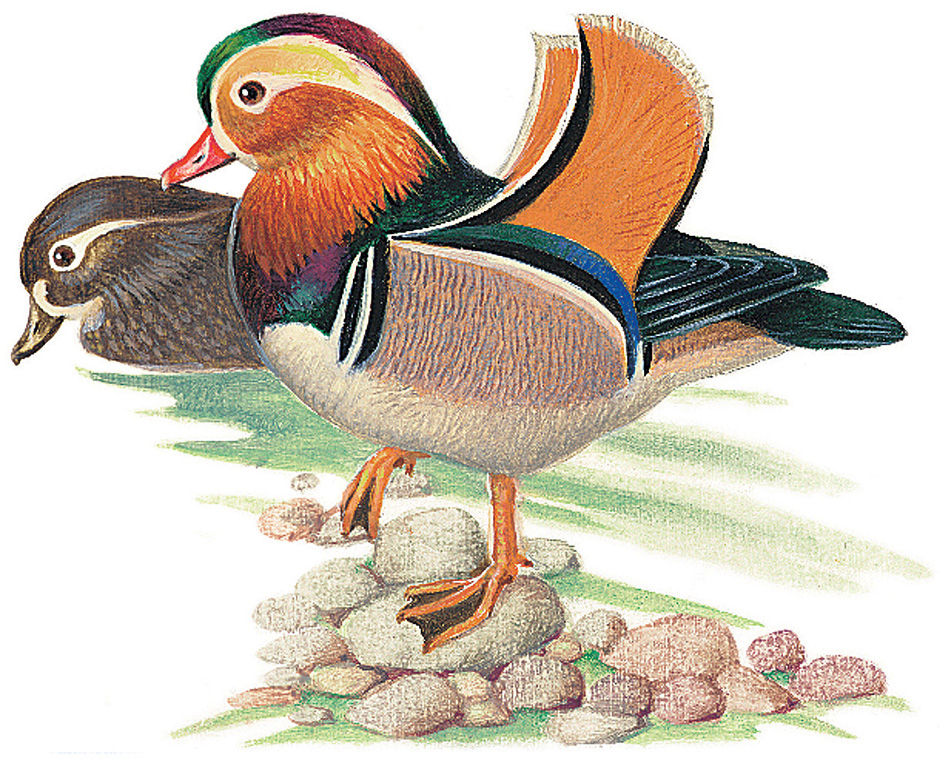
Sea ducks
(Mergini) include mergansers, eiders, scoters, old squaws, harlequins, buffleheads, and goldeneyes. Mergansers have long, narrow bills with sawlike edges to hold fish. Old squaws dive deeper—up to 180 feet (55 meters)—than any other water bird. Eiders produce down that is valuable as insulation in bedding and winter clothing. The Labrador duck, the only extinct duck of North America, was a sea duck.
Shelducks
(Tadornini) consist of a few species of bulky, short-billed ducks. Both sexes have similar plumage, and the young are covered with black and white down. They live in Europe, Africa, and Asia.
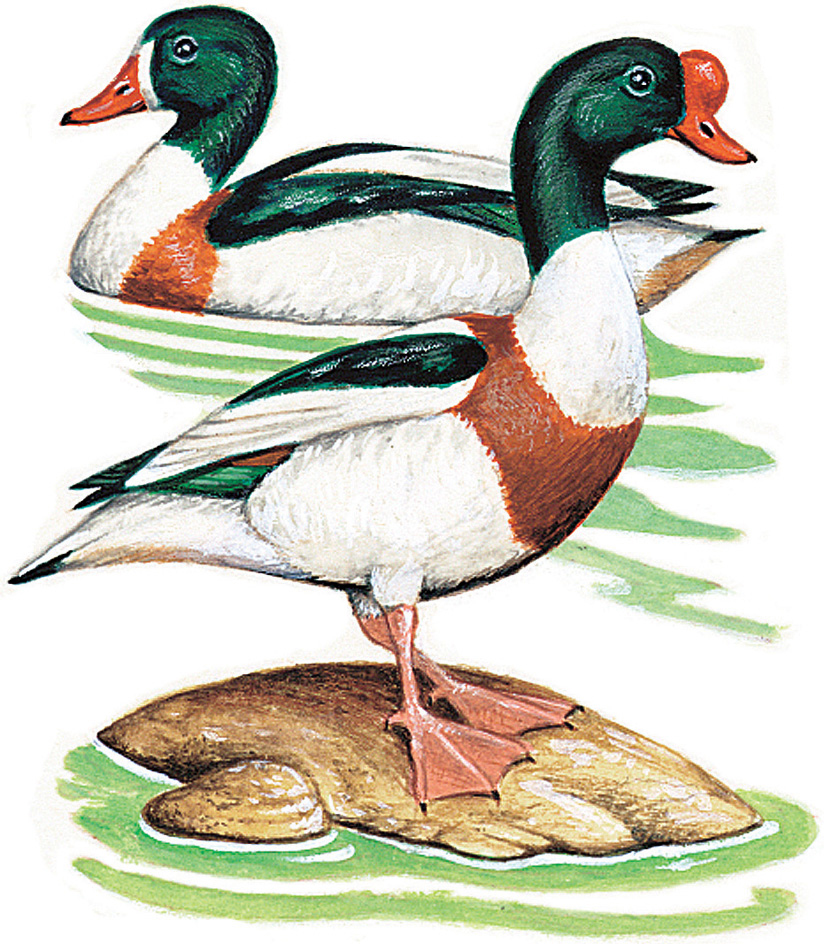
Steamer ducks
(Tachyerini) consist of a small group of marine ducks with heavily built bodies and short wings. These ducks live in southern South America.
Stiff-tailed ducks
(Oxyurini) have spiky tail feathers that help them steer underwater in search of food. The ruddy duck is the only stiff-tailed duck found in the United States. This small duck lays eggs about twice as large as chicken eggs. Another stiff-tailed duck, the masked duck, lives in Mexico and Central and South America.
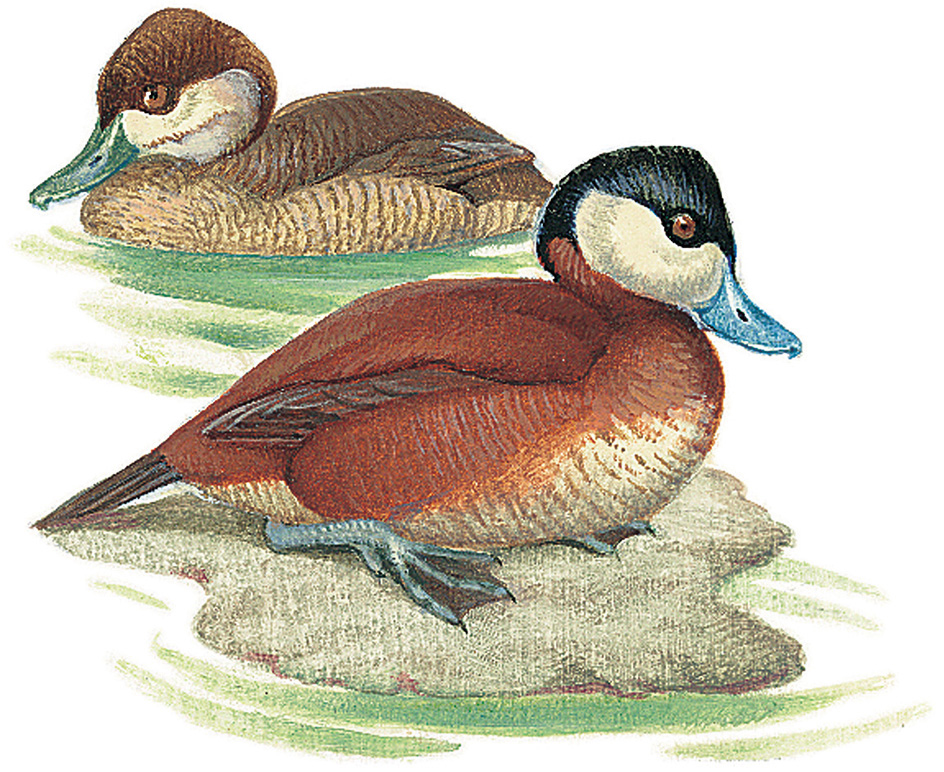
The torrent duck
(Merganettini), a single species, lives along rivers throughout much of South America’s Andes Mountains. Males have predominantly black, gray, and white coloring. Females have mostly gray feathers on their head and back, with rich brownish coloring on their undersides.
Protection of ducks
Many countries regulate the number of ducks that hunters may kill. Refuge areas protect important duck environments. However, the destruction of their wetland habitats remains a major threat to ducks. Duck hunters buy special stamps to raise money to help protect wetlands from being drained.
